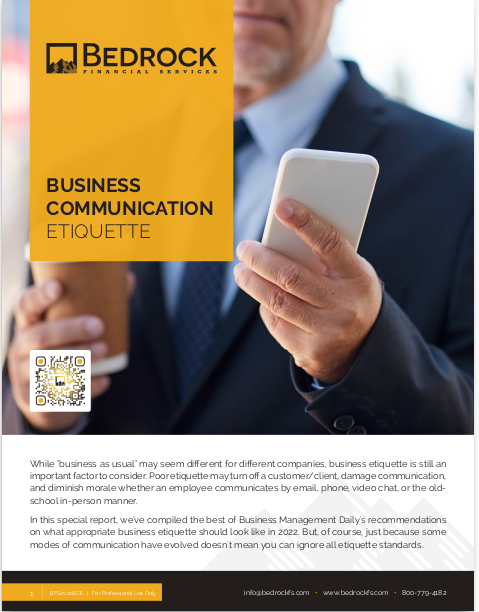Key Takeaways
-
A simple three-part planning structure can make your client conversations feel deeply personal while staying efficient.
-
When you center your planning on emotional goals, not just financial ones, clients open up faster, stay longer, and refer more often.
The Power of Feeling Understood
In 2025, clients aren’t just looking for numbers on paper. They’re looking for a connection. They want to feel like you see them, not just their portfolio or their risk tolerance. That shift opens the door to a different kind of planning framework—one that doesn’t start with spreadsheets or policies but with a human moment.
You don’t need a complicated model. Just three simple stages:
-
Hear It – Learn what matters emotionally.
-
Frame It – Organize those emotions into financial relevance.
-
Name It – Offer a shared language to keep planning grounded.
Let’s break it down, so you can apply it instantly.
Hear It: The First Five Minutes Matter Most
Before any fact-finding or forms, use the first five minutes to listen—not just politely, but with intention. Clients often enter meetings guarded. They expect a pitch. What surprises them is when you delay the numbers.
Ask questions like:
-
“What does a good future feel like to you right now?”
-
“What’s something you want to protect more than anything else?”
-
“When you think about money, what’s the first word that comes up emotionally?”
You’re not gathering data here—you’re gathering tone, energy, and emotional themes. Pay attention to what lights them up or brings tension into their voice. You’re planting the roots of your plan in soil that matters to them, not just what’s mathematically optimal.
Frame It: Translate Feelings into Planning Priorities
Once you’ve heard them, you need to make their feelings feel actionable. That’s where most agents stumble—they jump too fast from empathy to analytics. But there’s a space between those two that’s critical: framing.
Your job in this moment is to reflect their words in a way that links emotion to priority. For example:
-
If they say, “I just want to make sure my family’s okay no matter what,” you might frame that as a planning focus on income continuity and legacy.
-
If they say, “I never want to feel dependent on anyone,” you might frame that around autonomy-driven retirement income streams or disability planning.
The key is to echo back their emotional words and tie them to your process:
“You mentioned that security is what keeps you up at night. That helps us know where to start—because protecting that feeling is more important than just protecting dollars.”
That sentence does more than build trust. It gives your client a reason to believe the plan is theirs, not just yours.
Name It: Create a Shared Anchor
Naming their plan—or even specific parts of the plan—makes everything more memorable and personal. This isn’t branding. This is alignment.
You might say:
-
“Let’s call this your ‘Bridge Plan’—to help you cross to retirement in ten years with confidence.”
-
“This part is your ‘Freedom Fund’—so you don’t feel tied down if work ever becomes too much.”
When you name parts of the plan based on what they said earlier, it ties the strategy to their identity. That’s where clarity meets commitment.
These micro-brands inside your process give them something to hold onto when life feels uncertain. They aren’t just remembering numbers. They’re remembering meaning.
Why This Framework Works in 2025
Clients today are saturated with digital noise. Most are comparing multiple agents, tools, and products. What they’re not getting often enough is a feeling of clarity.
By using a framework that emphasizes listening, personalization, and emotional anchoring, you create a contrast that cuts through the noise. And because it’s simple, it doesn’t feel overwhelming.
Plus, in a world increasingly reliant on automation and AI-generated planning tools, your human-first structure makes you unforgettable.
Using the Framework in Review Meetings
It’s not just for new clients. The same Hear It – Frame It – Name It structure works powerfully in review meetings too.
-
Hear It: Ask, “What’s changed in the past year that felt big emotionally?”
-
Frame It: Reframe their answers around shifts in protection, growth, or freedom priorities.
-
Name It: Update names of the plan sections if needed, based on evolving values.
When you show clients that your process adapts to their life—not just their account balances—you strengthen retention year after year.
You Don’t Need to Be a Therapist
Let’s be clear: you’re not here to counsel or diagnose. But you are here to be a pattern recognizer. By listening for emotional keywords and recurring themes, you become a translator—not of feelings into therapy, but feelings into financial action.
This is especially powerful when working with multi-generational families or couples with conflicting priorities. It gives you a neutral structure to hold their emotions without judgment.
You also avoid the biggest mistake agents make—treating logic and emotion as opposites. The truth? Emotion is what drives action. Logic just justifies it after.
Bringing It into Email and Follow-Up
The naming step doesn’t have to end in the meeting. You can use the same framework in your communication:
-
In subject lines: “Update to Your Freedom Fund”
-
In summaries: “We focused on maintaining your Bridge Plan so the next 5 years stay steady.”
-
In reminders: “Let’s revisit the protection piece next quarter, since that’s what brings you peace of mind.”
This creates emotional continuity. Your clients don’t feel like you’re restarting every time. They feel like the conversation never left them.
What to Avoid
While this framework is simple, it can backfire if rushed or misused. Avoid the following:
-
Don’t fake empathy. Clients feel it when you’re just mirroring to close a deal.
-
Don’t skip the emotional step. Jumping straight to numbers breaks the trust-building process.
-
Don’t rename too generically. “Retirement Plan A” doesn’t carry emotional weight. Use their words, not yours.
-
Don’t use it as a gimmick. The framework works only when it’s authentic and consistently applied.
Stick to your client’s language, and you’ll never go wrong.
Timeline to Make It a Habit
If you want to start using this framework regularly, here’s how you can phase it in over 30 days:
Week 1
-
Use “Hear It” questions in your next three meetings.
-
Don’t analyze—just document themes you hear.
Week 2
-
Practice “Frame It” in your prep work: take their words and convert them into planning categories.
-
Say it back to them and ask, “Does that sound right to you?”
Week 3
-
Start naming one element of each plan. Keep a running list of client-driven plan names.
Week 4
-
Use the framework start-to-finish in every new meeting.
-
Begin introducing names in your email recaps.
It won’t take long before this becomes your natural rhythm.
Your Plan Is the Conversation
This framework reminds you that the plan is not just what’s on paper. The plan is the conversation. It lives in how they feel, what they remember, and whether they trust you enough to keep showing up.
Clients may forget the percentages you quoted. But they won’t forget what you helped them name. Or how you helped them feel seen.
Build Trust with a Better Process
By using a framework that puts your client’s emotions front and center, you transform planning into a collaboration—not a transaction. You become the kind of agent who doesn’t just manage risk but helps people manage their hopes and fears.
That’s where we come in. At Bedrock Financial Services, we help professionals like you build systems that feel personal and scale with ease. Our CRM, automation tools, and email templates are designed with this kind of human-centered planning in mind.
Sign up today and let us help you make every conversation count.







